Transfering files, powering up devices, and connecting gadgets – these are only the tip of what’s possible with USB data cables in 2024. And as these cables’ functionalities advance, so too do the complexities associated with purchasing the right variety for the right occasion.
This article will look at the most important factors retailers must consider when choosing USB data cables to suit their consumers’ needs and preferences.
Table of Contents
Predictions for the USB data cable market
5 things to look for when stocking USB data cables
Summary
Predictions for the USB data cable market
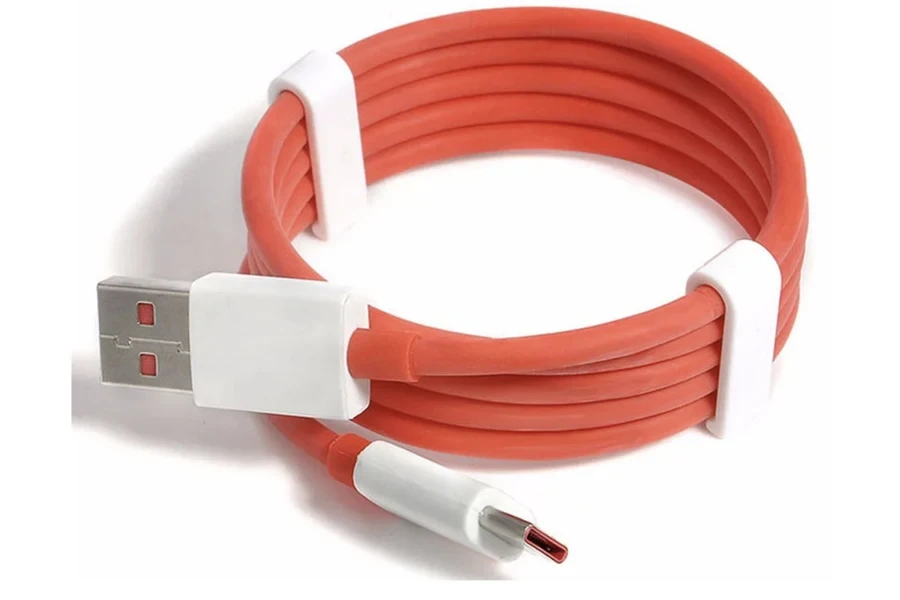
USB data cables are one of the fastest-growing markets globally. According to reports, the market closed 2022 with a value of USD 14.8 billion value, which is predicted to grow to USD 71.6 billion by 2032 at a 17.2% CAGR.
The USB cable industry is growing quickly due to the increasing demand for consumer electronics. The rise in usage services, like video streaming, video conferencing, gaming, and home surveillance systems, is also propelling the market growth.
In addition, the advent of USB 4 and other technological advancements have positively contributed to the USB data cable market’s growth. Asia Pacific is emerging as the dominant region due to the wide acceptance of smart devices, with China and India leading the charge in terms of countrywide sales.
5 things to look for when stocking USB data cables
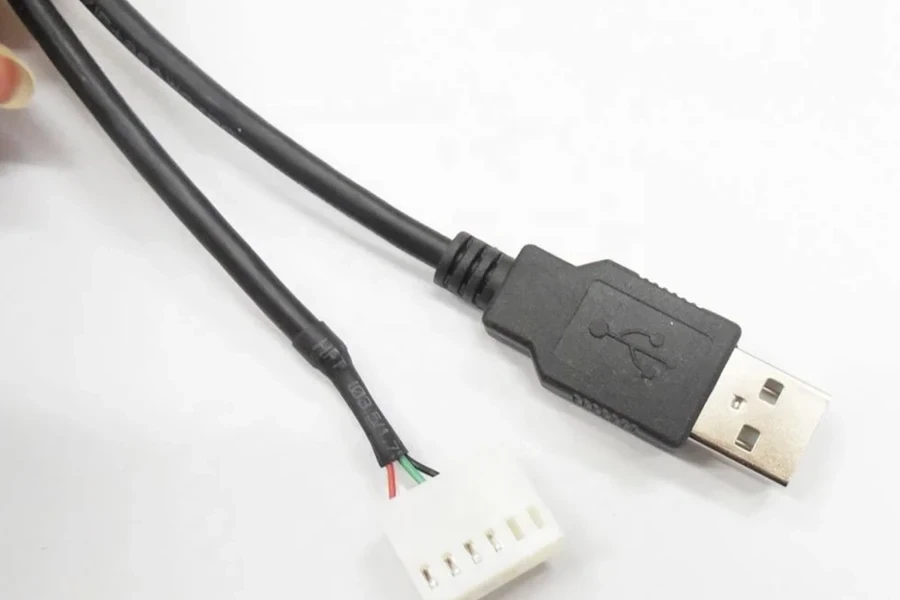
Charging power
The type of USB cable needed will likely be determined by the device that the consumer wants to charge (i.e. phones, laptops, etc.), as this in turn dictates how much wattage (W) they will require.
While it’s crucial to choose cables that can deliver enough power to the device, sellers don’t have to worry about offering cables that are stronger than what consumers require. For example, while a 100W USB cable can effortlessly charge a 30W phone at top speeds without any issues, a 30W model’s performance will prove slow on a 65W laptop.
This table below showcases the different types of USB data cable charging cables available and their supported devices:
| Charging power | Supported devices |
| 100-240W | Larger laptops, external graphic cards, and workstations |
| 60W | Larger notebooks, docking stations, laptops, and hubs |
| 36W | Notebooks, hubs, smartphones, and displays |
| 18W | Smartphones, larger accessories, and tablets |
| 10W | Hard drives, small accessories, smartphones, and headphones |
In addition, most major phone manufacturers offer their own charging protocol versions via USB cables. These include:
- Samsung Adaptive Fast Charging
- Qualcomm Quick Charge
- OPPO VOOC/Warp Charge
- MediaTek Pump Express
- Huawei SuperCharge
Don’t worry if the chosen cable doesn’t support these custom charging protocols – it’ll still charge, albeit at a slightly lower speed.
Build quality

A durability is directly linked to its frequency of use. For example, charging cables must offer more durability than variants used for transferring data occasionally.
You may not know this, but manufacturers rate parts of their products, like the USB receptacles, based on the maximum number of insertion and removal cycles. A USB data cable’s receptacle offers the highest durability, at a whopping 10,000 total cycles (this number only relates to the receptacle, not the cable itself).
Unfortunately, there is no standard for testing USB data cable durability, though some manufacturers will perform bend tests on their cables to see how much they can endure before losing functionality. In this case, businesses should look for specific build ratings to ascertain build quality.
Retailers should also seek out features like reinforced connectors, braided nylon shielding, and thick conductors (less than 25 AWG), as these often indicate cables with better build qualities.
Device compatibility
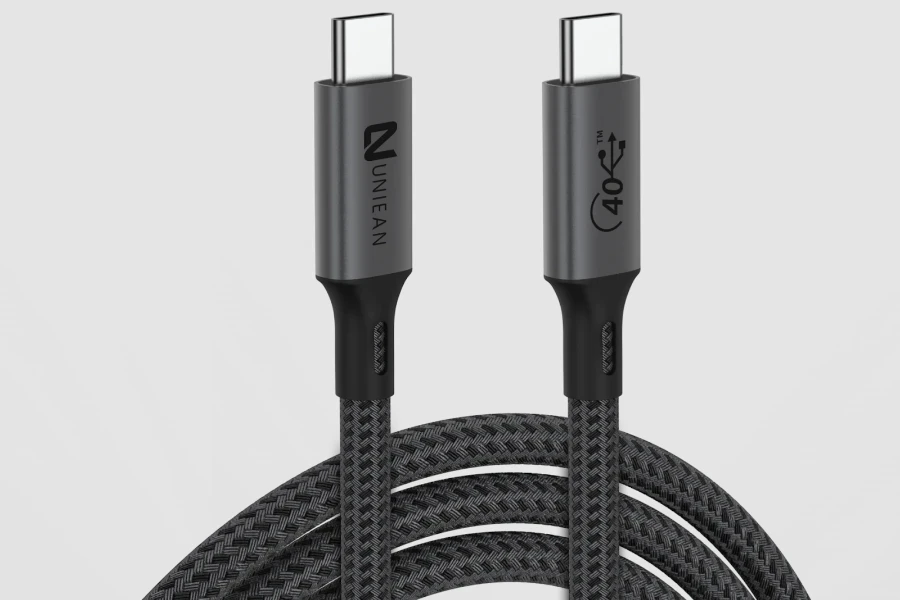
Generally, it’s safe to use USB cables for different devices, even when they’re not part of the cable’s “branded ecosystem.” However, sellers must ensure they’re offering cables that are compatible with the target devices. The thing to look out for here is the connectors.
Connectors are the part that plugs into the device’s charging port. The types currently available on the market include Type-A, Type-B, Type-C, Micro-B, Mini-B, and lightning (Apple).
One way to maximize device compatibility is to stock up on modular (all-in-one) USB data cables. These innovative products offer different connectors, allowing consumers to use one cable for multiple devices like phones, speakers, laptops, and e-readers with a simple switch.
Data transfer speed
Data transfer speed is also a crucial factor to consider, especially in the usages where large files will need to be transferred. It is the USB version that primarily determines data transfer speed.
For example, the latest standard USB4 currently offers the fastest data transfer speeds, boasting speeds of up to 120 Gbps. While most consumers won’t need such speeds, they’ll definitely need USB 3.0+ to enjoy acceptable data transfer speeds.
| USB version | Description | Speed |
| USB 3.2 | SuperSpeed+ | 20 Gbps |
| USB 3.1 | SuperSpeed+ | 10 Gbps |
| USB 3.0 | SuperSpeed (SS) | 5 Gbps |
| USB 2.0 | High speed | 180 Mbps |
Power delivery and alternate modes
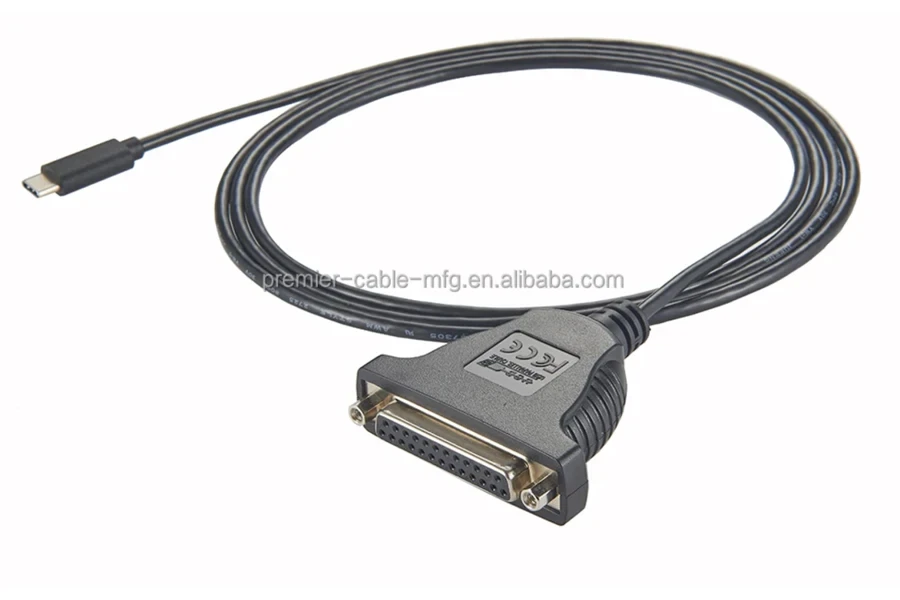
USB cables are quickly replacing other connectors (even laptop chargers) as the new norm. But how do these tiny cables handle the demand from power-hungry devices like fast-charging mobile phones, hard drives, and laptops? With power delivery, that’s what!
USB power delivery lets USB-C cable move enough power (240W) to these devices for safe charging or data transfer. But this is only one of the many alternate modes offered in the USB-C protocol.
For example, full-featured USB cables can also use alternate modes like HDMI Alt Mode, Thunderbolt, DisplayPort, and Mobile High-Definition Link (MHL). While these features may not be for the everyday consumer, it’s worth having for those who can accept the increased cost.
Note: All USB-C cables come with power delivery, but not all can carry up to 240W. Check the manufacturer’s spec sheet or logo on the connector to know the cable’s capabilities.
Cable length

All USB cables come with a length limit, designating at which pointthe USB signals will decrease in quality. Interestingly, each USB generation offers different maximum cable lengths.
USB 1.0 cable will lose quality beyond 9 feet, USB 2.0 can reach 16 feet, while USB 3 and its revisions have a limit range of around six to nine feet. Although cables can go beyond these stated lengths, functionality may be affected, so it’s advisable to stick to the recommended cable length.
Summary
With EU legislation pushing toward making USB-C the cable norm by the end of 2024, it’s no surprise that the model’s popularity has shot through the roof recently, with Google Ads data showing they received 823,000 searches in December 2023.
Despite this gradual shift, many devices still use different ports, meaning consumers still need cables that fit. For this reason, it’s best to first research your target audience and the types of cables they are most likely to require.
By leveraging the tips in this guide, businesses can better navigate the USB data cable market and take advantage of this fast-growing trend in 2024.
Finally, no matter what cable you’re looking for, you’ll find it among the thousands of options from trusted suppliers on Chovm.com.
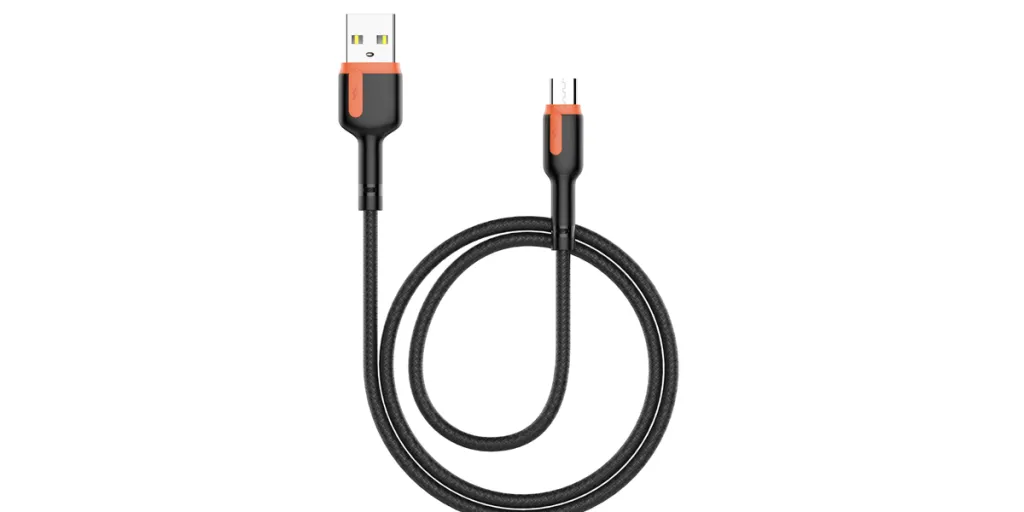




 Afrikaans
Afrikaans አማርኛ
አማርኛ العربية
العربية বাংলা
বাংলা Nederlands
Nederlands English
English Français
Français Deutsch
Deutsch हिन्दी
हिन्दी Bahasa Indonesia
Bahasa Indonesia Italiano
Italiano 日本語
日本語 한국어
한국어 Bahasa Melayu
Bahasa Melayu മലയാളം
മലയാളം پښتو
پښتو فارسی
فارسی Polski
Polski Português
Português Русский
Русский Español
Español Kiswahili
Kiswahili ไทย
ไทย Türkçe
Türkçe اردو
اردو Tiếng Việt
Tiếng Việt isiXhosa
isiXhosa Zulu
Zulu